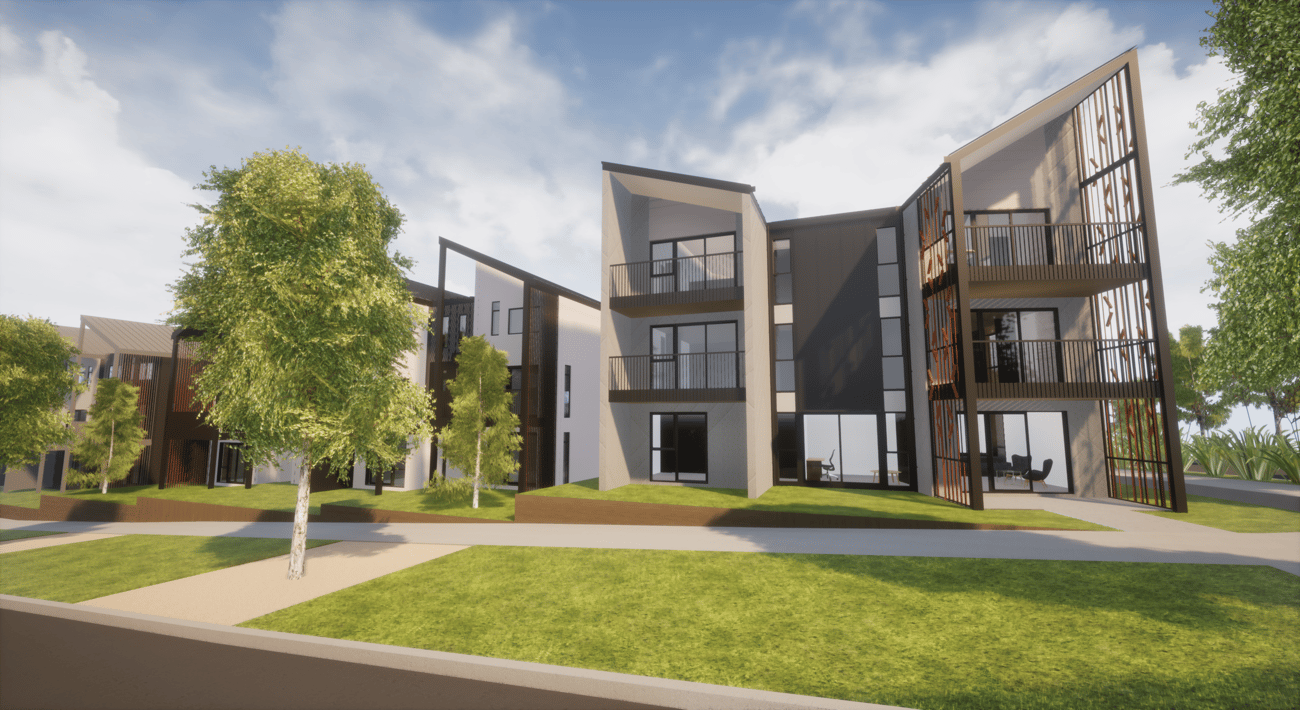
The first-time people strap on a VR headset, they’re amazed by the way they can walk into a digitally created environment, move around it and see realistic textures and lighting.
Clients, colleagues and peers are knocked out by what we can do with virtual reality and augmented reality (VR and AR). And by we, I mean the architectural profession.
Last week, a visitor to our VR lab told me it’s the most excited she’s been by technology since the first Star Wars movie. Virtual reality does have something of the zeitgeisty wow-factor of a sci-fi blockbuster.
So people look at me sideways when I say VR and AR are just getting started. And when I start talking about how they will change the architectural profession in ways that people haven’t thought of and aren’t talking about yet.
Let me be clear: I believe VR and AR will change architecture for the better. It will democratise design and help end the myth that good design has to be expensive.
It is transforming the way we work with clients, stakeholders and the construction industry. It’s demystifying the process, stripping away our trappings of mystery and our opaque language of massing and materiality.
Think about the way architects have always worked with clients. We magic up freehand sketches, but then produce plans and elevations that most people can’t imagine as real three-dimensional places.
As architects, we’ve learnt to see how these elements come together to make buildings. We don’t always see that our clients can’t always imagine that too with the same accuracy.
We require them to make a bit of a leap of faith. To trust us to deliver something they’d be happy with two years down the road. We’d ask them to gamble a sizeable investment that we’d produce a place they’d love and would deliver on their drivers.
Architecture sold – and sells – a dream. But it’s a dream that can hold a lot of reality: a few wrinkles in the fantasy fabric and things can go awry, with views not quite how they looked on the artist’s impression or apartments with ceilings not quite as expansive as they seemed on the page.
In the past, clients lived with this process because we guarded the mysteries of the temple. Virtual and augmented reality changes that.
Clients can now see exactly what we see. If they feel the walkway’s too narrow as they stroll through their virtually realised development, they’ll let you know.

Some architects might see this as a blow for the profession. An end to the architect’s role as the conjurer of forms. A sorcerer relegated to the role of a screen jockey. I personally think it will revitalise and enhance architecture.
It means we can reinvent architecture as a highly creative service industry, as well as an art form. Which is really what it should always have been: a profession that collaboratively produces beautiful places for people to live and work well.
This will be the real impact of VR and AR design techniques: an augmented reality that lets people see and experience a digital building in place, on a real site.
Think of the time-consuming vital consultation process for large projects and consultations with users, the local community, discussions with planners and authorities. VR gives us a way to achieve a faster process with better, more meaningful engagement.
A group of stakeholders will be able to gather on a real site, like the 29 hectare site that will be carved out of the Unitec campus to provide 4000 new Auckland homes.
The proposed buildings materialise in front of them and they can walk the virtual streets, enter the houses, and even climb the stairs and check out the view from the back bedroom.
Architects can hear their questions and feedback first hand and explain design decisions, and maybe even modify them. They can show how making gardens bigger can mean less green streets, and no space for cycle paths and less obtrusive parking.
VR also makes us design better. In the past, it was possible to overlook niggly details to be resolved as the buildings took shape. A nipped window width here, a tucked gutter there.
Virtual buildings, which is what we call our approach, means that details have to be resolved early on, but it’s easier to iron out the wrinkles because you can see them. You’ll feel that the ceiling height isn’t right. You can agree construction details with a prefabricator – VR design enables the precision that offsite construction requires – or contractor long before muddy boots connect with damp concrete.
This means better outcomes and fewer expensive mistakes, which should translate into higher standards for all homes, including for the ones that cost $2,500 a square metre – which is where the design details have to work hardest – not just the $15,000 per square metre statement houses.
This matters because everyone deserves a good, well designed home.
And the design tools will keep getting better. The software and hardware is developing fast. At the moment, you still have to do a little custom knitting to turn a virtual building model into convincing, immersive VR experiences, but this is changing.
This year, Microsoft and Trimble, the company that owns SketchUp, launched a hardhat with a built in 3D projector. Construction workers can see 3D engineering drawings overlaid on a physical environment. Science fiction made tradie science-fact.
Bright people are transferring skills from the game development and movie industries into visualisation. We have several gamers on the team at Context Architects.
However the technology plays out, I believe VR and AR is good for architects and good for the people who live in the buildings they design. And when it comes to the impact of virtual and augmented reality on architecture, as the song says, we ain’t seen nothing yet.




